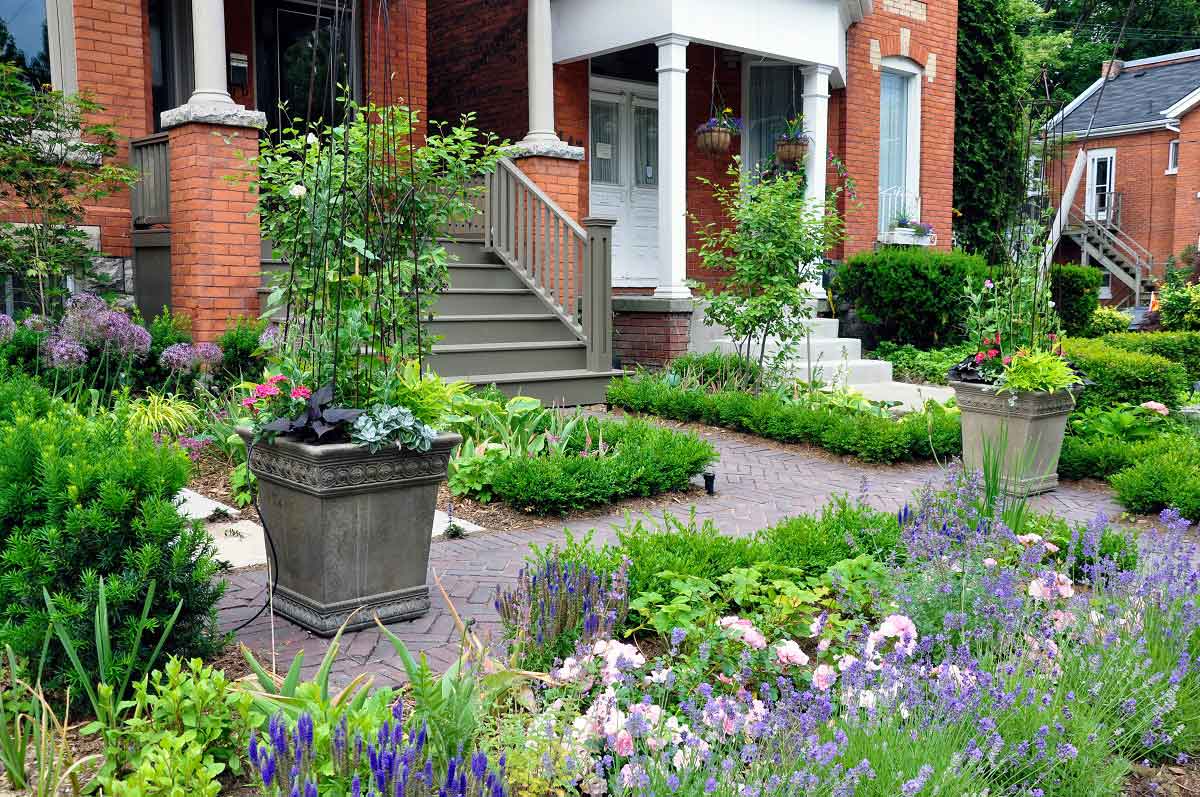When it comes to creating a stunning landscape, understanding the concept of hardscape is crucial. Hardscape refers to the non-living elements of a landscape design that contribute to its functionality, structure, and aesthetics. These elements play a pivotal role in creating outdoor spaces that are both visually appealing and functional.
In this informative guide, we will delve into what is considered hardscape, exploring its various components and their significance in crafting a breathtaking landscape.
What Is Considered Hardscape: A Brief Overview
Hardscaping is an essential aspect of landscape design that involves the incorporation of non-living elements into outdoor spaces.
Hardscaping elements are designed to withstand the test of time and enhance the overall outdoor experience. Hardscaping contractors use various materials, such as concrete, stone, wood, and metal, to create structures, pathways, and other features that add functionality and aesthetic appeal to the landscape.
The Elements of Hardscape
Hardscaping provides the backbone of outdoor design, defining spaces, offering functionality, and contributing to overall aesthetics. Here are some of the common elements of hardscape designs.
1. Patios and Decks
Patios and decks serve as the foundation of outdoor living spaces. Constructed from materials like concrete, pavers, or wood, they provide a solid surface for entertaining, dining, or simply enjoying the outdoors. Patios and decks can be designed in various shapes, sizes, and patterns to suit individual preferences and complement the overall landscape design.
2. Walkways and Paths
Walkways and paths serve both functional and aesthetic purposes in a landscape. They provide a means of navigation and create a visual flow throughout the outdoor space. These pathways can be constructed using materials such as flagstone, gravel, or brick, offering a charming and inviting way to explore the landscape.
3. Retaining Walls
Retaining walls are essential for stabilizing soil and preventing erosion on sloped terrain. They also add dimension and visual interest to the landscape. Constructed from materials like concrete blocks, stone, or timber, retaining walls can be designed in various heights and styles, blending seamlessly with the overall landscape design.
4. Water Features
Water features, such as ponds, fountains, or waterfalls, add a sense of tranquility and visual allure to a landscape. These elements provide a soothing ambiance and serve as focal points, attracting birds and other wildlife. Water features can be customized to fit any size or style of landscape, bringing a touch of serenity to outdoor spaces.
5. Outdoor Structures
Outdoor structures, including pergolas, gazebos, or arbors, offer shade, shelter, and architectural interest in a landscape. These structures can define specific areas within the landscape, providing comfortable spaces for relaxation or entertainment. Constructed from wood, metal, or vinyl, outdoor structures add a sense of elegance and functionality to the overall design.
6. Garden Walls and Borders
Garden walls and borders create boundaries and define different areas within a landscape. They can be used to separate flower beds, create raised planters, or enclose specific garden spaces. Constructed from materials like bricks, stones, or decorative concrete blocks, garden walls and borders add structure and delineation to the landscape design.
7. Outdoor Lighting
Outdoor lighting is an essential element of hardscape design, enhancing safety, functionality, and ambiance. It illuminates pathways, highlights architectural features, and creates a warm and inviting atmosphere during the evening hours. Various lighting techniques, such as spotlights, pathway lights, or string lights, can be utilized to showcase the beauty of hardscape elements and extend the usability of outdoor spaces.
The Purpose and Benefits of Hardscaping
Now that we’ve shed light on what is considered hardscape, let’s explore these elements’ purpose and benefits. Hardscaping serves multiple purposes in landscape design, offering numerous benefits to homeowners and outdoor enthusiasts:
- Structure and Definition: Hardscaping elements, such as patios, decks, and retaining walls, provide structure and define specific areas within the landscape. They create clear boundaries, separate functional spaces, and establish a sense of organization in the outdoor environment.
- Functionality and Usability: By incorporating hardscape features like walkways, paths, and outdoor structures, hardscaping enhances the functionality and usability of outdoor spaces. It allows for easy navigation, provides designated areas for seating or dining, and offers shelter from the elements.
- Aesthetic Appeal: Hardscaping elements contribute to the visual appeal of a landscape. They add texture, depth, and architectural interest, creating focal points and enhancing the overall aesthetics of the outdoor environment. Hardscape materials can be chosen to complement the style and theme of the surrounding natural elements.
- Low Maintenance: Hardscaping elements generally require less maintenance compared to softscape elements like plants and flowers. Materials such as concrete, stone, or composite decking are durable, long-lasting, and resistant to weather conditions, reducing the need for frequent upkeep.
- Water Management: Hardscaping plays a crucial role in water management within the landscape. Features like permeable pavers and retaining walls help control water runoff, prevent erosion, and ensure proper drainage, promoting environmental sustainability.
Conclusion
Hardscape elements are vital components of a well-designed landscape. They provide structure, functionality, and visual interest, while also defining and organizing outdoor spaces. The careful integration of hardscape elements with softscape elements, such as plants and trees, creates a harmonious balance and a stunning overall landscape design.By incorporating hardscape elements strategically, homeowners can transform their outdoor spaces into inviting retreats that reflect their personal style and enhance the beauty of nature. If you’re looking for licensed contractors to transform your outdoor space, head over to Trusted Hardscape today!

